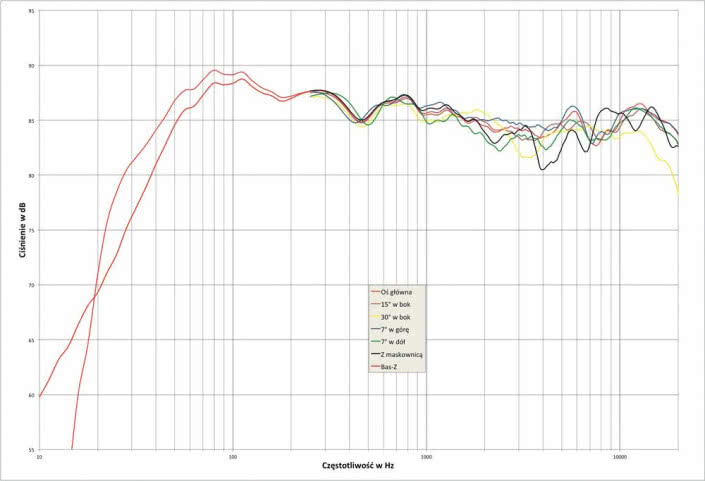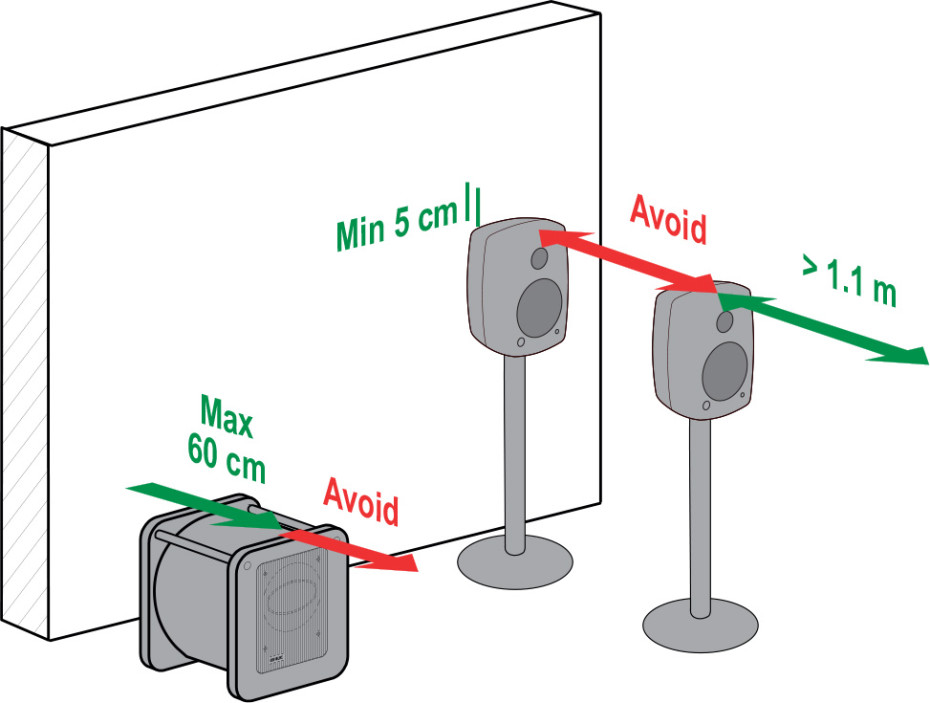This is a review and detailed measurements of the Revel F328Be floor standing speaker. I purchased a single unit through our company (Madrona) with kind discount from Harman Sales (I asked for a review sample from the PR group but was told "don't call us, we will call you."). The retail cost of F328Be is US $8000 each or $16,000 for a pair. This makes it the most expensive speaker we have tested to date.
I chose the color black and I must say, this is one gorgeous speaker:
View attachment 92617
It comes in an exquisite finish with sparkles in it in the top panel:
View attachment 92618
Even the Beryllium tweeter exudes beautify (in the eye of an audiophile of course):
View attachment 92619
Here is a closer shot of the speaker itself:
View attachment 92620
As you see, there are three 8 inch woofers backed by two large ports in the back. There is then a mid-range and tweeter.
Measurements that you are about to see were performed using the
Klippel Near-field Scanner (NFS). This is a robotic measurement system that analyzes the speaker all around and is able (using advanced mathematics and dual scan) to subtract room reflections (so where I measure it doesn't matter). It also measures the speaker at close distance ("near-field") which sharply reduces the impact of room noise.
Both of these factors enable testing in ordinary rooms yet results that can be more accurate than an anechoic chamber. In a nutshell, the measurements show the actual sound coming out of the speaker independent of the room.
I performed over 2000 measurement which resulted in error rate of less than 1% throughout the range. This took over 4 hours to capture all the data which resulted in a 1.5 gigabyte file (imagine doing this work manually!).
Temperature was 60 degrees F. Measurement location is at sea level so you compute the pressure.
Measurements are compliant with latest speaker research into what can predict the speaker preference and is standardized in CEA/CTA-2034 ANSI specifications. Likewise listening tests are performed per research that shows mono listening is much more revealing of differences between speakers than stereo or multichannel.
Reference axis was between the midrange and tweeter (a guess).
Revel F328Be Measurements
Acoustic measurements can be grouped in a way that can be perceptually analyzed to determine how good a speaker is and how it can be used in a room. This so called spinorama shows us just about everything we need to know about the speaker with respect to tonality and some flaws:
View attachment 92621
This speaker was very difficult to measure in low frequencies. The combination of two ports and three woofers created an overly complex low frequency sound field. The initial runs produced clearly incorrect measurements below 200 Hz. After five sets of measurements and optimization, I dialed out almost all the error. The results show that little step between 100 and 200 Hz which Harman data does not. I suspect with a bit more optimization that could have been filled in a bit more. This aside, for a passive speaker we have excellent flatness of response especially considering how many sound producing elements there are here.
Efficiency is superb for a Revel speaker but do keep in mind that we need power in low frequencies the most and there, we don't have nearly the 91 dB that we have in the upper range. This of course applies to all speakers.
Look at how the dashed blue line (early window) nicely parallels the black dashed green line indicating excellent directivity (direct and indirect sounds match). This makes the speaker room friendly as the reflections don't change the tonality of the speaker much. And also allows easy equalization. Let's look at the sum of important early reflections:
View attachment 92625
Amazing that all the varying reflections sum to such a smooth response. Putting everything together, we get a prefect predicted in-room frequency response:
View attachment 92626
It took me forever to measure all the drivers and ports in near-field. Turns out most of them were duplicating each other's response so here is a sample set:
View attachment 92627
Notice the port tuning down to 30 Hz! This speaker should produce very deep bass. And clean too when you look at these incredible distortion measurements:
View attachment 92629
Are you seeing what I am seeing? Even at 96 dB SPL, you hardly have any bass distortion. Indeed during measurements, I could hear the most perfect sweep ever of any speaker I have tested. Most of the time I hear the pitch change/distort during the range. Not here. The sweep was so buttery smooth. Yes, that is an objective technical term!
Here is the distortion in absolute level:
View attachment 92630
I picked 50 dB as a rather arbitrary limit long time ago with speaker after speaker missing that mark in low frequencies. Not the Revel F328Be. With the exception of one frequency, it stays well below that.
Horizontal beam width is very smooth:
View attachment 92631
Notice how the line in pink is also smooth (-12 dB).
Shown as a contour map, we see the same nice response:
View attachment 92632
Due to inclusion of a mid-range, the vertical response is also good compared to our typical 2-way speakers:
View attachment 92633
Since this is a tall speaker, you may want to tilt it down a bit if you are sitting too close to it.
Finally, here is our impedance measurement:
View attachment 92634
That is a pretty low impedance so make sure you have a good, high-current amplifier to go with this speaker.
There is a small resonance visible but I don't see a sign of it in the frequency response so it must be quite minor.
Revel F328Be Listening Tests
Truth to be told, I measured this speaker weeks back. But then it sat in the garage because I could not figure out how to carry it to our loft to listen to it. I almost post just the measurements but then I thought questions of sound and comparison against my Revel Salon 2 would come from every angle. Asked my wife if should could help me drag it upstairs and she said no way as did my back. Didn't know what to do for a while until I realized there was another option: create a setup in our living room which is at the same level as the garage. So I built a quick system out of
Matrix Element i streamer and DAC plus
Purifi Amplifier. The picture you saw at the start of the review was the setup except I had the speaker further into the room.
First impression was: "this is the sound I am always looking in a speaker." It sounded very familiar to me as it should. What surprised me though was the deep bass. I had not heard such clean and deep bass out of any speaker I have tested so far. My own Salon 2 speakers produce them of course but nothing I had tested would come close. The F328Be was there. It is a wonderful kind of bass you don't get out of a sub in how clean and integrated it is. It doesn't jump out to slap you in the face. At the same you wonder why you had never heard these notes with smaller speakers.
I ran through my "speaker killer" tracks which are full of these sub bass frequencies and the F328Be produced them like it was an everyday affair. Even at super elevated levels, the sound was exceptionally clean. No hint of bass distortion let alone bottoming out. I could see the triple woofers moving but no deep excursion to make them distort.
The one sensation you should know about is that these are tall speakers. When placed too close to you, the voices sound like they are way above you. In a way this is a natural presentation of the size of a singer. But at the same time, you don't want it to keep reminding you so. Push them out and this effect reduces.
I actually listened to the F328Be out in the open first before pushing it into the corner. The latter did cause a bit of boominess due to room mode. I don't have current measurements for our living room so I did not try to dial them out. It is the nature of speakers that play low that they excite room modes more, requiring DSP correction for best sound.
So do the F328Be speakers outperform my Salon 2? With no ability to listen to them in the same spot, I can't say for sure. I can say that at no time I wished I had the F328Be instead of my Salon 2. Its sound simply asymptote up the level of Salon 2 but didn't exceed it. You are spending $6,000 less with 328Be so coming this close is impressive.
In some sense I am the wrong guy to review this speaker, coming from Salon 2. It was impossible to impress me with a speaker with similar tonality and performance.
Conclusions
It was great to test the premier speaker in Harman's newest line. The F328Be is in entirely different class than any other speaker we have tested. The difference comes in impressive bass performance that is essentially distortion-free. This brings a level of clarity and dynamics that is addictive. You can play as loud as you possibly want and the speaker comes along happily. No sign of any change in speaker response. It is just at home playing audiophile tracks and rock and roll.
Needless to say,
I am happy to recommend the Revel F328Be. If you want to buy a set of speakers and be done with it, you know what to get now!
------------
As always, questions, comments, recommendations, etc. are welcome.
This was our 100th speaker review and measurements!!! Hooray!
Hard to imagine testing so many speakers since January. When I bought the Klippel NFS measurement system, I was wondering how it would ever pay for itself. I figured if I tested 100 speakers, it would still cost $1000 per so we could have just asked a service to do the work. But here we are in less than a year and we are already passing that benchmark. Here is to another 100 speaker reviews!
Appreciate any donations using: https://www.audiosciencereview.com/forum/index.php?threads/how-to-support-audio-science-review.8150/




